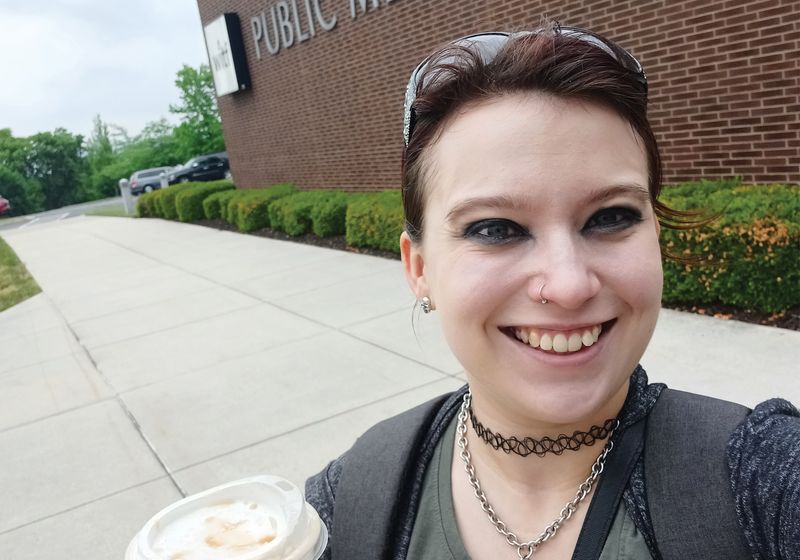Image credit:Shelby Bradford
From the moment she learned to write, Shelby Bradford was crafting stories. It began with reimagining story endings and evolved into building her own fantastical tales. Then, the magical world of science caught her interest in middle school. She found DNA captivating, thanks to shows like CSI, before she learned about the macabre stories of the Black Death. It plagued her thoughts and ignited a curiosity to study microbiology and immunology. Today, as an assistant editor at The Scientist, she covers topics including the science in sci-fi movies, bacteria in tattoo ink, and more.
I love that I get to explore such a wide range of research topics…It feels like having access to a scientific buffet.
—Shelby Bradford, The Scientist
Q | What is your scientific background?
As an undergraduate at West Virginia University, I initially entered the biology program. Near the end of my first semester, I attended a presentation about a new program called Immunology and Medical Microbiology. It immediately caught my attention, and I was the first person to apply. I joined Mariette Barbier’s lab, where I studied vaccines against Pseudomonas aeruginosa. Later, I earned my PhD in immunology and microbial pathogenesis, where I worked in Cory Robinson’s group to study neonatal vaccination with a focus on the Bacillus Calmette-Guérin vaccine.
Q | How did you transition into science writing?
In my third year of graduate school, I began exploring careers beyond research. I discovered a passion for science communication after watching a video on superhero science by educator Kyle Hill. It immediately resonated with me, and I wanted to learn everything about it and pursue it further. While seeking different ways to immerse myself in the field, I started writing for the Massive Science Consortium, which is an online publication that covers scientific news. Around 2022, I branched out into science outreach by volunteering with the Science Public Outreach Team (SPOT), a statewide program in West Virginia. In 2023, I got a fellowship with the American Association for the Advancement of Science (AAAS) and worked as a general climate and energy reporter during the 10-week program. It was a great experience with science communication, and shortly afterward I joined The Scientist.
Q | What is your favorite story that you’ve written for The Scientist?
I love exploring the science-adjacent activities that researchers engage in outside of their daily work. One of my most memorable stories was about how scientists serve as consultants on movie sets to ensure scientific accuracy. I spoke with experimental pathologist Ian Lipkin, who consulted on Contagion, and biomedical engineer James Dahlman, who helped advise on the movie Rampage. It was really fun to hear about their experiences and how hands-on their roles became from creating a 3D virus model for Contagion to teaching actors the art of pipetting in Rampage. I enjoyed uncovering the details and behind-the-scenes insights that contribute to a movie’s praised execution.
Shelby volunteers at the Carnegie Science Center and does activities and demonstrations with a broad audience.
Carnegie Science Center
Q | How do you choose your story topics?
I enjoy opportunities that allow me to bring in an educational angle. For example, I once interviewed a researcher who developed a cell biology game called CraftCells—stories like that are so much fun to cover and share. Because of my passion for science education and quirky, creative approaches, these kinds of conversations are especially rewarding. They help connect science to a wider audience in ways that are both accessible and engaging.
Q | What is your favorite part of being a science writer?
I love that I get to explore such a wide range of research topics with everything from biofuels to sex hormones’ connection to drug addiction. It feels like having access to a scientific buffet. What makes it even more engaging is the opportunity to speak directly with the researchers behind the work. Their first-hand stories add a rich storytelling element that you don’t get from reading polished papers alone. I especially enjoy hearing about their trial-and-error experiences, such as the behind-the-scenes moments that often go untold but reveal so much about the research process.
Q | What do you like to do outside of work?
I volunteer at the Carnegie Science Center, where I present on different topics and lead and lead hands-on activities and demonstrations for a general audience. Outside of science, one of my favorite hobbies is attending concerts. My personal seating preference is what I call “barrier or bust,” because I love the energy you get from the crowd around you and being right up and personal with the band and speakers.

